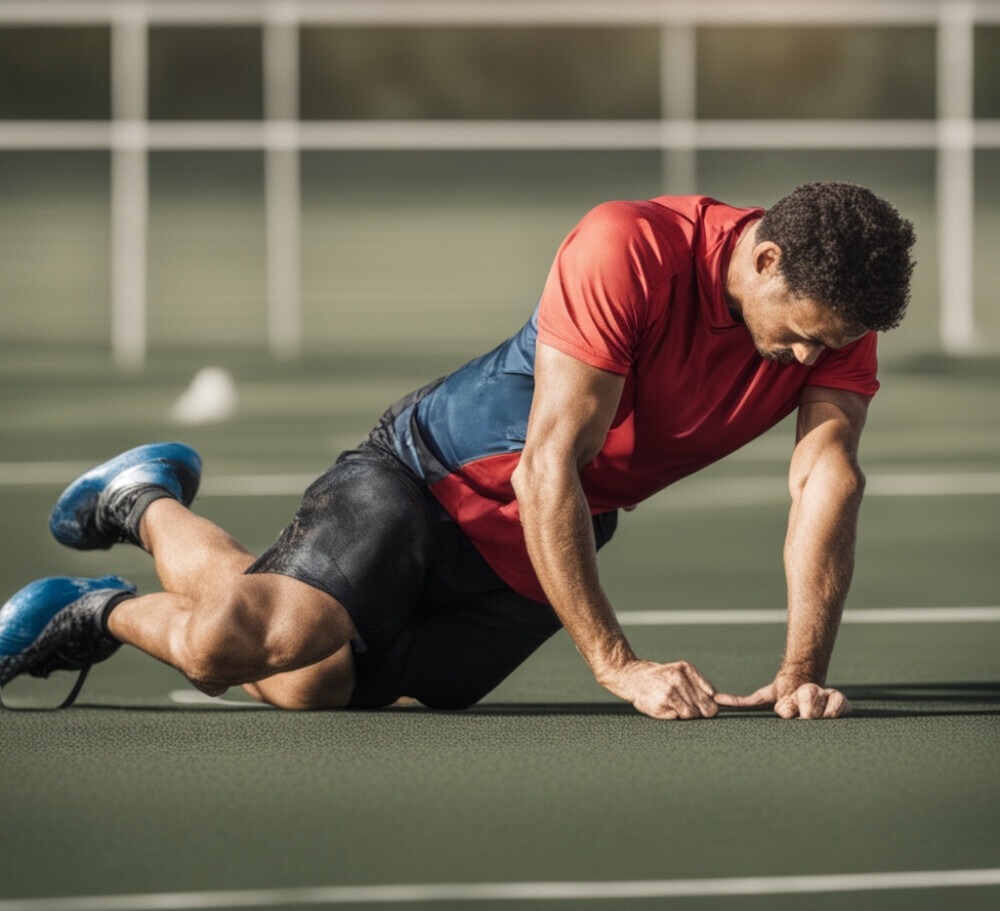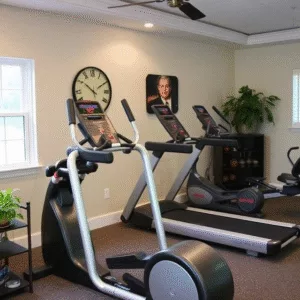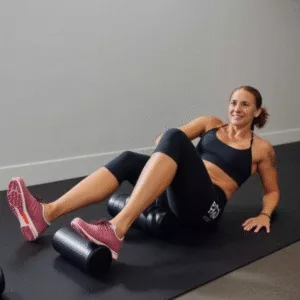
In todays post I’m going to introduce you to the tips for preventing and recovering from training injuries. Unfortunately, being injured while taking part in sport does happen.
When injuries occur, it’s time to follow the best steps that will stop you from making things worse. And help you to improve and speed up recovery. The steps are simple, yet very effective when applied.
Tips For Preventing And Recovering From Training Injuries
Injuries are a part of any athlete’s journey, but many can be avoided or minimized with the right approach. Let’s dive into some effective strategies to prevent injuries in training and accelerate recovery when they do happen. Because believe it or not they do!
If, not treated promptly and correctly, can lead to more severe problems and a longer break away from the sport you love.
Prioritize Warm-Ups and Cool-Downs
Starting with a proper warm-up and cool-down can make a world of difference. Warm-ups get your blood flowing and prepare your muscles for action, reducing the likelihood of strains and sprains. Incorporating dynamic stretches like leg swings, arm circles, and light cardio primes the body for intense activity.
On the flip side, cool-downs help your body recover and reduce soreness by bringing your heart rate back to normal and flushing out lactic acid. Both steps should be part of every workout and are essential tips for preventing and recovering from training injuries.

Mix Up Your Routine With Cross-Training
Cross-training is like giving your muscles a vacation while still being active. Repeating the same exercises over and over can lead to overuse injuries. Especially in muscles and joints that aren’t given adequate time to recover. Incorporating activities like swimming, cycling, or yoga can help balance out your body’s workload.
This type of variety can reduce the risk of injury and improve overall fitness. Most people who participate in a sporting activity tend to over-look this simple fact and this alone can lead to injuries.
Tips For Preventing and Recovering From Training Injuries
Listen to Your Body
Your body sends signals when it’s overworked. And paying attention to those cues is one of the best tips for preventing and recovering from training injuries. Whether it’s unusual pain, prolonged soreness, or persistent fatigue, these are all signs that you might be pushing too hard. Take rest days seriously, they are just as crucial as your workout days for muscle recovery and preventing burnout.
I use to believe that every day should be spent training to stay ahead of the competition. Which is still a strong belief that I hold, but now I know mixing it up stops me from overworking my muscles.
Use Proper Form and Technique
Using proper form and technique isn’t just for show. Every movement should be executed with care to protect your muscles, tendons, and joints. Bad form is one of the leading causes of training-related injuries. If, you’re unsure of your technique, consult a trainer or coach to ensure you’re moving safely and effectively.
This is key to preventing silly injuries, always make good technique a priority in all you do.
Immediate Action Steps When an Injury Occurs
Even with the best prevention strategies, injuries can still happen. Knowing how to respond is key to minimizing damage and ensuring a swift recovery. There’s no need to panic!
Unless, you’ve fallen and caused an injury from the fall, you should receive messages from your body. How you act on these messages, will make the difference to the severity of your injury.
Tips For Preventing and Recovering From Training Injuries
Recognize the Signs Early
Recognizing the severity of an injury right away is crucial. Sharp, sudden pain, or any unusual discomfort during exercise, is your body’s way of signalling a problem. Ignoring these signs could worsen a minor issue, turning it into a significant injury. Trust your instincts and respond promptly. Never ignore the signals, your body will protect you if you pay attention to it.
Tips For Preventing and Recovering From Training Injuries
The R.I.C.E. Method
The R.I.C.E. method (Rest, Ice, Compression, Elevation) is one of the most effective tips for preventing and recovering from training injuries. It’s a go-to first aid strategy in the early stages of an injury:
- Rest: Stop any activity to prevent further damage.
- Ice: Apply ice to reduce swelling and numb pain.
- Compression: Use a bandage to minimize swelling and support the injury.
- Elevation: Raise the injured area above heart level to reduce inflammation.
Following these steps can improve your chances of a faster recovery. And help you to not suffer from a recurring problem, a few months down the line.

Know When to Seek Professional Help
Not all injuries can be treated with self-care. If, you’re dealing with intense pain, severe swelling, or inability to move the injured area, seek medical attention immediately. It’s better to lean on the side of caution and ensure you’re not dealing with a fracture or a severe strain.
We are not all doctors and therefore will not be able to fully access an injury. My advise is to treat your injury using the R.I.C.E method and if there’s no improvement in 3 days, seek medical help.
Tips For Preventing and Recovering From Training Injuries
Strategies for Long-Term Recovery
Recovery doesn’t end when the pain subsides. Adopting a sustainable approach ensures you come back stronger while minimizing the risk of re-injury. The human body is very complexed and does have its own way of dealing with injuries.
Recovering from a sports injury, especially in the long term, requires a well-structured and individualized approach that addresses physical, psychological, and lifestyle factors. Here’s an expanded look at strategies for long-term recovery,
1. Comprehensive Rehabilitation Program
A structured rehabilitation program is the cornerstone of long-term recovery. This program should include several key elements:
- Physical Therapy: Designed to restore range of motion, strength, and function. Early-stage physical therapy typically focuses on reducing pain and inflammation, while later stages aim to rebuild muscle strength, coordination, and endurance.
- Progressive Loading: The intensity of exercises should be increased gradually, using principles of progressive overload. This ensures that the injured area adapts without overstraining.
- Neuromuscular Training: To re-establish control over the muscles and joints, sports-specific drills that focus on movement patterns, balance, and proprioception (the sense of joint position) are critical.
2. Pain Management and Anti-Inflammatory Strategies
While long-term recovery focuses on function, managing pain remains important:
- Medication: NSAIDs (Non-Steroidal Anti-Inflammatory Drugs) may be used intermittently, but chronic use should be avoided due to side effects. Opioids are not generally recommended for long-term recovery.
- Cryotherapy and Thermotherapy: Cold therapy (ice) can reduce inflammation in the early stages, while heat therapy helps with stiffness and soreness as recovery progresses.
- Alternative Therapies: Acupuncture, dry needling, and soft-tissue manipulation can be used to relieve chronic pain and promote circulation.
3. Gradual Return to Sports-Specific Activities
A stepwise approach to resuming sports-specific activities helps minimize the risk of re-injury:
- Functional Movement Assessments: Before returning to play, athletes should undergo functional assessments to ensure that they have the required mobility, strength, and coordination.
- Modified Training: Gradually reintroducing sports drills, with adjustments in volume and intensity, helps the athlete rebuild confidence and body mechanics.
- Pre-habilitation: Exercises that target injury-prone areas (like hips and knees) to prevent future injuries should be part of ongoing training routines.
4. Psychological Support and Mental Health Management
Long-term injuries can take a toll on mental health. Addressing this is crucial for a complete recovery:
- Cognitive-Behavioral Therapy (CBT): This can help athletes cope with the stress, frustration, and anxiety associated with being side-lined. Learning coping mechanisms to manage setbacks and pressure is important.
- Goal Setting: Breaking the recovery process into small, achievable milestones can help the athlete stay motivated.
- Visualization Techniques: These are often used in sports psychology to keep the athlete mentally engaged with their sport, helping to maintain mental sharpness and rebuild confidence.
5. Nutrition for Healing and Recovery
Proper nutrition supports tissue repair, muscle recovery, and overall healing:
- Protein: Sufficient protein intake is crucial for muscle repair and collagen synthesis, which is necessary for ligament and tendon recovery.
- Anti-Inflammatory Foods: A diet rich in antioxidants, omega-3 fatty acids, and anti-inflammatory foods (like fruits, vegetables, fish, nuts) can reduce chronic inflammation.
- Micronutrients: Calcium, Vitamin D, and Magnesium play a role in bone health, while Vitamin C and Zinc are essential for tissue repair.
- Supplementation: In some cases, supplements like collagen, glutamine, and branched-chain amino acids (BCAAs) may be recommended to speed recovery and support muscle function.
6. Biomechanical and Movement Corrections
If poor biomechanics contributed to the injury, addressing these is vital:
- Gait and Movement Analysis: Identifying improper movement patterns (e.g., running form, improper weight distribution during jumping) can help prevent future injuries.
- Custom Orthotics or Braces: For certain injuries (like foot, knee, or lower back problems), custom orthotics or braces may be needed to correct alignment issues or provide additional support.
- Strength Imbalance Correction: Identifying and correcting muscular imbalances (e.g., one leg being stronger than the other) can reduce stress on vulnerable joints or muscles.
7. Cross-Training and Low-Impact Activities
Cross-training helps maintain fitness without overloading the injured area:
- Swimming, Cycling, and Rowing: These are great options for maintaining cardiovascular fitness without high impact.
- Yoga or Pilates: These activities improve flexibility, core strength, and balance while reducing joint strain.
- Weight Training: Strength training with modified or controlled weights helps maintain muscle mass while promoting recovery.

8. Monitoring and Long-Term Health Maintenance
After the initial recovery, continuous monitoring and maintenance are essential:
- Regular Check-Ups: Periodic evaluations with a physical therapist, athletic trainer, or doctor can help monitor progress and detect any issues before they become major problems.
- Ongoing Flexibility and Strength Programs: To prevent future injuries, a routine maintenance program that emphasizes flexibility, mobility, and strength training is crucial.
- Injury Prevention Education: Teaching proper warm-up techniques, using protective gear, and staying educated on how to avoid overtraining are vital long-term strategies.
9.
Tips For Preventing and Recovering From Training Injuries
Rest and Recovery Periods
Sufficient rest is critical, not just during injury recovery but as a part of ongoing sports participation:
- Active Rest: Incorporating active rest days (e.g., light stretching, walking) prevents burnout while promoting blood flow and tissue recovery.
- Sleep: Adequate sleep (7-9 hours per night) is essential for tissue healing and muscle recovery. Poor sleep can hinder long-term recovery and increase the risk of re-injury.
10. Patient Education and Self-Management
Empowering athletes to take control of their recovery helps ensure success:
- Understanding the Injury: Educating the athlete about the nature of their injury, expected recovery times, and common challenges can help them better navigate the recovery process.
- Self-Care Tools: Teaching athletes how to use foam rollers, massage guns, or resistance bands can give them the tools to manage soreness, improve flexibility, and stay engaged in their recovery.
Tips For Preventing and Recovering From Training Injuries, Rehabilitation Plan
Working with a healthcare provider or physical therapist to create a personalized rehabilitation plan is crucial for effective recovery. This plan should include exercises and treatments tailored to your injury, fitness level, and long-term goals. With a structured plan in place, you can steadily regain strength, flexibility, and mobility.
Tips For Preventing and Recovering From Training Injuries, Physical Therapy
Physical therapy isn’t just for severe injuries. It’s a proactive approach to address imbalances, strengthen weak areas, and improve range of motion, reducing the likelihood of future injuries. Regular sessions can significantly speed up recovery and ensure long-term success.
Adapting Your Routine to Prevent Re-Injury
One of the smartest tips for preventing and recovering from training injuries is to adapt your routine for injury prevention. Incorporate regular strength training, focus on flexibility, and build adequate rest into your weekly schedule. Each of these aspects plays a critical role in building a more resilient body.
Final Thoughts on Tips For Preventing and Recovering From Training Injuries
Injury prevention and recovery are all about balance. Prioritize listening to your body, using proper techniques, and giving yourself adequate rest. When injuries do occur, respond quickly with the right strategies and stay committed to your recovery plan.
By incorporating these tips for preventing and recovering from training injuries, you’ll be better equipped to stay healthy and strong on your fitness journey.
Long-term sports injury recovery requires a holistic and multifaceted approach. It involves more than just healing the injured area; it’s about strengthening the body, managing mental health, and preventing future injuries. By combining a structured rehabilitation program, pain management, psychological support, nutrition, and ongoing monitoring, athletes can recover fully and return to their sport at their best.
I hope this post as opened your eyes on how to best protect yourself during your participation in sport. I look forward to your questions and comments.
Ultimate Training Gear.






